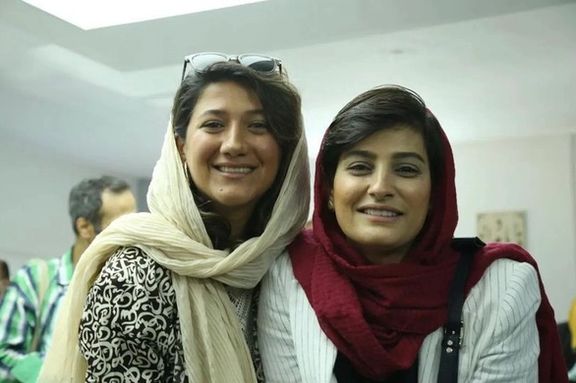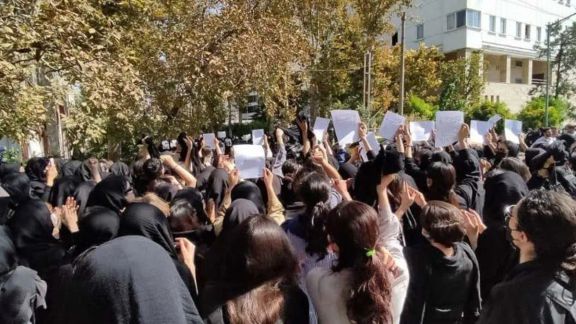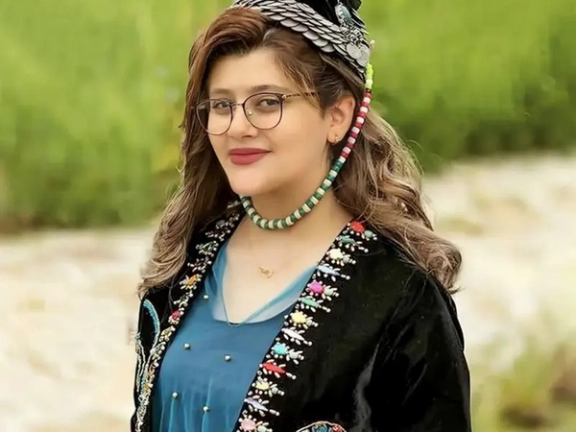Iranian Cleric Says Most Actresses In Hollywood Are Victims Of Rape

An Iranian cleric in charge of ideological enforcement claims that 94% of Hollywood actresses in the United States have experienced sexual assault and rape.

An Iranian cleric in charge of ideological enforcement claims that 94% of Hollywood actresses in the United States have experienced sexual assault and rape.
In a Saturday ceremony in Tehran, Abdolhossein Khosropanah, the secretary of the Supreme Council of the Cultural Revolution, made the startling claim saying the statistic is the highest rate of violence against women in the US.
However, notable for his assertion was the absence of any source or evidence to support the claims. Khosropanah went on to state, "Human rights have been restricted to propaganda games," dismissing criticism of Iran's own violations.
His comments come in the wake of a recent UN General Assembly committee resolution that criticized Iran for various human rights violations, including discrimination against and harassment of women and girls. The resolution, initially introduced by Canada, condemned the Iranian regime's misogynistic policies and practices, urging Tehran to cease its discrimination against women.
Despite international criticism, the Iranian regime has continued to tighten legislation, particularly targeting hijab and 'chastity' laws. The crackdown coincides with a growing number of women in Iran rejecting the mandatory headscarf and restrictions on their public appearance. Surveillance has intensified, and recent tragic incidents, such as the death of 16-year-old Armita Geravand, echo the concerns raised by the Women, Life, Freedom movement, sparked by the death of Mahsa Amini last year while in morality police custody.
Iran's MeToo movement has been active in shedding light on systemic sexual abuse within the country's legal system, with women facing constant threats of sexual violence both on the streets and in prison.

As a significant winter gas shortage looms in Iran due to increased household usage, officials are once again highlighting the nation's substantial gas consumption.
A report from ISNA news agency on Friday revealed that Iran stands as the world's fourth-largest consumer of gas in the world, surpassing even Canada, recognized as an industrialized and cold climate country.
Iran annually produces approximately 260 billion cubic meters of gas, with 18 billion cubic meters allocated for export and the remainder consumed domestically. Notably, Iran also experiences losses of 25 billion cubic meters during the production and transportation stages.
In comparison, Iran's gas consumption is five times higher than Turkey's and double that of Canada's, due to lack of energy diversity. For instance, Turkey and Canada generate 35 times and 30 times more solar and wind energy than Iran, respectively.
Moreover, Turkey and Canada outpace Iran by producing nine times and 53 times more electricity from hydroelectric power plants. In essence, Iran's energy landscape lacks diversity, with 68% of the country's energy consumption relying on gas, while this figure is 26% for Turkey and 31% for Canada.
Natural Gas Wastage in Iran
According to World Bank and the International Energy Agency, Iran flares 18 billion cubic meters of gas annually (bcm/yr) due to lack of gas collection equipment in oil fields. Additionally, there is 7 bcm/yr gas leakage in transmission and distribution network.

In simpler terms, Iran's gas losses during production and transmission alone equal half of Turkey's total gas consumption.
Moreover, Iran supplies 70 bcm/yr of gas to power plants, nearly 1.5 times Turkey's total gas consumption. The efficiency of Iran's thermal power plants is 33%, and a significant portion of the received fuel is wasted during the conversion to electricity. Furthermore, 13% of the country's electricity, equivalent to 49 terawatt-hours, is lost during the transmission and distribution stages, equal to half of Iran's household electricity consumption. This is also due to lack of investments in new equipment and technology.
The efficiency situation in the industrial, petrochemical and commercial sectors, which collectively consume around 110 bcm/yr of gas, is no better than that of the country's power plants.
In recent years, Iranian authorities have blamed the public for electricity and gas shortages, emphasizing the need to increase energy carrier prices. This is despite the residential sector in Iran accounting for only 27% of the country's electricity consumption (equivalent to 100 terawatt-hours) and 25% of its gas consumption (60 bcm).
Severe Gas Shortages
Iran faces severe gas shortages during winters as household gas consumption naturally increases significantly. Last year, Iran experienced a daily shortage of 250 mcm of gas, and this year, the imbalance is expected to reach 300 mcm/d.
With 33 trillion cubic meters, Iran has the world's second-largest natural gas reserves and is the third-largest global gas producer. However, most of the gas produced goes to waste.
One of the reasons for the high gas losses is the very low energy prices in the country. The power, industrial, petrochemical, and even the household sectors do not have much incentive to increase efficiency, reduce energy consumption and save more energy. Oil, gas and electricity production and distribution is controlled by the state.
A 12-fold depreciation of the value of the rial over the past decade has made energy even cheaper compared to other countries. If the government had raised the prices of energy carriers in line with the depreciation of the rial, the country would have faced hyperinflation like Venezuela, and there would have been a significant risk of widespread public protests.

According to estimates by the International Energy Agency, Iran had gas subsidies of $45 billion in 2022. In other words, the difference between the country's consumer gas price and global prices in 2022 was about $45 billion.
Iran also had subsidies of $30 billion for electricity and $52 billion for petroleum products last year. Iran with $127 billion fossil fuel subsidies ranks the second after Russia in the world.
The figure accounts for 36% of the country's total gross domestic product in 2022.

Almost a month since imprisoned Iranian journalist Niloufar Hamedi filed a complaint against Judge Abolqasem Salavati, there is still no update on the proceedings.
Hamedi took legal action, accusing the notorious judge of refusing to release her after a year of temporary detention. Salavati usually presides over cases against dissidents and journalists, issuing harsh sentences.
Hamedi, became famous and was arrested after she broke the news of the tragic incident involving the death of 22-year-old woman Mahsa Amini from head injuries, remains in custody alongside her colleague, Elahe Mohammadi, for over a year. Mohammadi was detained while covering Amini's funeral in Saqqez cemetery, Kordestan province.
Both Hamadi and Mohammadi, former correspondents for Iran's prestigious reformist newspaper, Shargh, and Ham-Mihan, respectively, have emerged as symbols of protest following Amini's death.
Expressing uncertainty about the status of the complaint, Hamadi's husband, Mohammad Hossein Ajorlou, stated, "We have no information about the consideration of the complaint, but Niloufar's illegal temporary detention continues after 444 days."
Despite widespread calls in Iran and abroad for freedom of expression and the release of the journalists, the Iranian judiciary exhibits reluctance in issuing bail and temporary release orders.
Iran continues to maintain a dismal ranking among the world's least free countries for press freedom. The situation has worsened since the initiation of the Women, Life, Freedom movement last year, resulting in numerous journalists being arrested and imprisoned.

Iranian dissident rapper Toomaj Salehi's life is “at risk” in prison and he may be a “target for assassination”, according to his social media account.
Salehi's official account on X reported on Friday afternoon that he is being kept in an area in Esfahan Prison where criminals, including those facing charges for dangerous crimes, are being held without following the principle of “segregation of criminals” by type of crime.
"Intentionally" and "with a prior conspiracy", physical clashes between inmates have occurred in the past few days, the social media account reported. A tense and stressful environment has been created to subject Toomaj to psychological torture and possibly murder plans, the account added.
Salehi, 33, was rearrested on November 30 less than two weeks after he was released on bail following his detention for supporting the nationwide protests last year. It was reported that the recent arrest had involved severe physical abuse, with officers purportedly using pistols and AK-47 rifles butts.
According to Mizanonline, an a website affiliated with Iran's notorious Judiciary, Salehi was rearrested for “spreading lies and the agitating public opinion.”
Salehi gained fame for his protest songs which addressed social issues and government injustices in Iran. His initial arrest, which involved more than a year of incarceration, including 252 days in solitary confinement, was part of a wider crackdown on political opponents following Mahsa Amini's death in morality police custody.
In October Toomaj Salehi was awarded the 2023 Arts Freedom of Expression Award by Index on Censorship, an organization promoting free expression.

In Student Day statements, Iranian student groups have criticized the government for suppressive methods in universities and vowed not to give up their fight for freedom.
Describing the present time as "one of the most suffocating eras for universities in Iranian history," a group of students from Tarbiat Modarres University, a graduate school based in Tehran, emphasized that despite their university being traditionally associated with the education of higher officials and managers of the Islamic regime, its students actively participated in the Woman, Life, Freedom movement.
As a result of their involvement, the students stated that intelligence and security forces have intensified efforts to intimidate and eliminate nonconformist students and professors at their university.
Student Day, which usually falls on December 7, marks the anniversary of a student protest in 1953 against the visit of then-US Vice President Richard Nixon during which three Tehran University students were killed by the police.
Hundreds of university students were arrested across Iran during the protests that followed the death of Mahsa (Jina) Amini in the custody of morality police in late September last year. For months students in various universities held protest rallies inside universities and in some instances, they were supported by their professors and other faculty members.
In the past year, intelligence and security forces have made every effort to bring students and universities, some of which were scenes of extensive protests for months during the Woman, Life, Freedom movement, under control. Students and professors are still called in by intelligence organs and interrogated and often forced to pledge that they will not participate in any protests.
Student sources say authorities have banned hundreds of students in different universities from studying this academic year for taking part in protests and expelled tens of professors for opposing the crackdown on students during anti-government protests.
The crackdown on universities after the Woman, Life, Freedom movement and the recent purge of academia seems even harsher than the Cultural Revolution in the early 1980s, Mahdieh Golrou, a former student activist told Iran International TV.
In 1980, soon after the victory of the Islamic Revolution, the new government’s Cultural Revolutionary Headquarters shut down universities for three years to purge the academia of what it saw as secular professors, who could potentially challenge the clerical ideology. The new regime wanted to enforce its own Islamic revolutionary ideology (Islamification) in higher education establishments. During this period, thousands of professors and students were purged for various reasons, including political inclinations and western influences.
Students of Tarbiat Modarres University said in their statement that they would not leave and surrender their university to totalitarians. “We will fight for the smallest of opportunities to breath and to resist and use them against Islamic totalitarians to reach a humane, free and equal society,” they added.
Student groups in other universities have issued similar statements.
Iran's supreme leader, Ali Khamenei, usually meets with students on Student Day and delivers a speech but this year no meeting or speech was reported.
Some other officials -- including President Ebrahim Raisi, Parliament Speaker Mohammad-Bagher Ghalibaf, and Chief Justice Gholamhossein Mohseni-Ejei -- visited universities and met with pro-government students, not on Student Day but up to three days earlier in ceremonies that appeared to be very low-key in comparison with previous years.

The family of Mahsa Amini, set to receive the Sakharov Prize from the European Union, were not allowed to leave Iran for France for the award ceremony.
Mahsa Amini, a 22-year-old woman, was apprehended by Iran's morality or hijab police on the street in mid-September 2022. Within hours, she was transported to the hospital with critical head injuries, ultimately succumbing to the trauma three days later. The incident swiftly ignited widespread protests across the nation.
Mahsa Amini's father, mother, and brother were informed at Imam Khomeini Airport that they were prohibited from leaving the country, and their passports were confiscated.
The European Union had announced on October 19 that Mahsa Amini, along with the Women, Life, Freedom movement, would be honored with the prestigious Sakharov Prize.
The Amini family has been under intense pressures from security forces since Mahsa's death. similar to intimidation and gag orders enforced by Iranian intelligence against other families whose young members were killed by the government.
On the anniversary of Amini's killing, her father was temporarily detained on September 16 by security forces for intimidation purposes. Following threats and warnings, he was eventually released. Reports from social media and local Kurdish sources suggested that Amjad Amini, Mahsa's father, faced restrictions on leaving his house for a certain period.
Amjad Amini and his wife, Mojgan Eftekhari, had earlier called for a gathering to commemorate the anniversary of Mahsa’s death at her gravesite in a cemetery in Saqqez, west of Iran.
Iran International received information that Amjad Amini was summoned multiple times by the Saqqez Intelligence Office after announcing the ceremony marking his daughter's death, undergoing hours of interrogation.